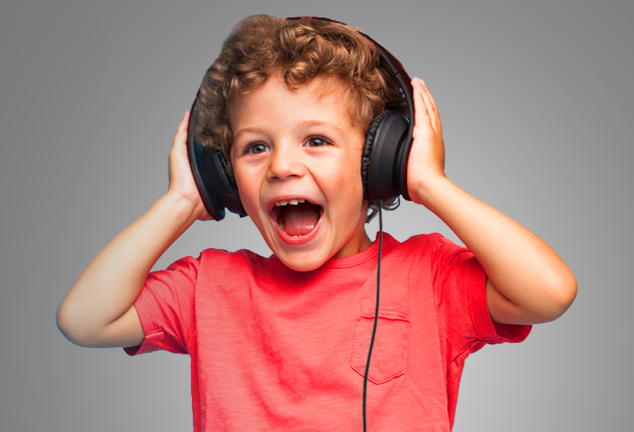If you’ve ever seen a child wearing headphones at a therapy clinic, there’s a good chance they were using a “listening program” as part of their therapy treatment. Listening programs, such as Integrated Listening System (iLs), are used to re-train the brain and enhance neuroplasticity. This treatment method is used to increase brain functioning and treat sensory challenges, trauma, anxiety, and learning and attention deficiencies.
Neuroplasticity refers to the brain’s ability to continue to form new pathways throughout our lives. In much the same way that we can build our muscles through strength training and develop our heart and lungs through aerobic exercise, we can also use certain activities, like listening programs, to “exercise” our brains.
What is a “listening program?”
Listening therapy has the potential to lead to better academic outcomes through improved reading comprehension, concentration, and memory, and to an increased ability to control impulses, self-regulate behavior and engage appropriately with others. Following is a list of ways that a listening program can benefit kids and teens:
For Brain Function
Focus and sustained concentration
Cognitive and motor multi-tasking, coordination
Emotional balance and confidence
Sensory and cognitive processing
For Autism/Sensory Challenges
Social skills
Emotional regulation
Sensory processing
Fine and gross motor skills
For Learning and Attention
Reading fluency and comprehension
Sensory and auditory processing
Language skills: speech, processing, and articulation
For Trauma and Anxiety
Social and emotional difficulties
Auditory sensitivities
Stressors that impact social engagement
Anxiety and trauma-related challenges
Listening therapy is designed to retrain the brain by using special music, bone conduction, and movement. Combining these three things provides simultaneous multisensory input to the brain and body.
What’s different about the music?
The music is enhanced by filters which remove certain frequencies from the music. Faster frequencies have a higher pitch, while lower frequencies have a lower pitch. The filters may remove the higher frequencies, allowing the child to perceive only the middle and lower range, the lower frequencies so he can hear only the middle and higher range, or both so he perceives only the middle range.
Does the program require special headphones?
Listening therapies are typically delivered through headphones rather than speakers because the quality of sound is controlled and background noise is minimized. The headphones used are also very different from ones you can buy in a retail store. First, the headphones capture the entire range of frequencies used in the program – most standard headphones can’t do that. Second, the headphones allow bone conduction through use of a small transducer, like a hearing aid. This transducer converts the sound to vibration.
What is bone conduction?
Consider how you can “feel” the loud car beside you on the road or “feel” the beat of a bass speaker on the floor. You are hearing the music through bone conduction. Sounds emit vibration which travels along the bones of the skull to the bony housing around the inner ear. This vibration causes movement of fluid in the inner ear, resulting in the activation of nerves. Many areas of the brain, including areas that affect balance, coordination, muscle tone, rhythm, and awareness of the body in space, are affected. All of these areas have a strong impact on attention and emotional regulation.
How long and how often does a child need to listen?
Depending on the age of the child, the time will vary. A toddler may listen for ten minutes a day, while a teenager may listen up to an hour. A minimum of three times per week is recommended. A therapist certified in iLs will recommend a program for the child.
The program will include the sequencing of musical selections and duration and timing of listening times, and may also include specific visual, balance, and movement activities. Integrating program music, bone conduction technology, and specific movements helps strengthen neurological pathways and improve the ability to learn and process information.
Kid’s Creek Therapy has several therapists who are certified in Integrated Listening Systems (iLs). If you believe your child could benefit from a listening program, ask your child’s therapist or contact us for a free consultation.








